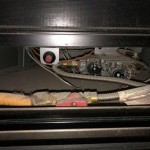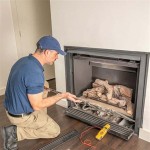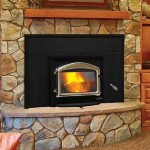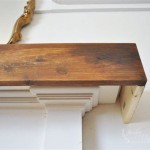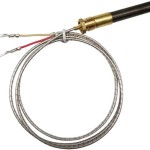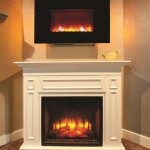Making A Fireplace: A Comprehensive Guide
The allure of a fireplace lies in its ability to transform a room, providing warmth, ambiance, and a focal point for gathering. However, constructing a fireplace is a complex undertaking that requires careful planning, adherence to building codes, and a thorough understanding of the various components involved. This article offers a detailed overview of the process, from initial design considerations to the final installation and safety checks.
Before embarking on the construction process, a homeowner must determine the type of fireplace desired. The two primary categories are wood-burning and gas fireplaces, each offering distinct advantages and disadvantages. Wood-burning fireplaces provide the traditional experience of burning logs, offering a rustic charm and a crackling fire. However, they require a consistent supply of firewood, regular cleaning, and adherence to air quality regulations. Gas fireplaces, on the other hand, offer convenience and ease of use. They are fueled by natural gas or propane and can be ignited with the flip of a switch. While they lack the authentic appeal of wood fires, they require less maintenance and produce fewer emissions.
Furthermore, fireplaces can be categorized based on their installation method. There are traditional masonry fireplaces, built from brick or stone, which often require a substantial foundation and are typically integrated into the structure of the house during original construction. Prefabricated fireplaces, also known as zero-clearance fireplaces, are manufactured units that can be installed within a framed enclosure, offering greater flexibility in placement and often requiring less structural support. Finally, electric fireplaces provide a purely aesthetic experience, simulating the appearance of flames without producing heat or requiring venting. These are generally the easiest to install but offer no actual heating capabilities.
Planning and Design Considerations
The initial stage of fireplace construction involves meticulous planning and design. This stage includes determining the optimal location for the fireplace, taking into account factors such as room size, existing structural elements, and desired aesthetic. It's crucial to consult local building codes and regulations to ensure compliance with safety standards and permit requirements. These codes typically dictate minimum clearances around the fireplace, chimney height requirements, and acceptable materials for construction.
The design process also involves selecting the appropriate materials for the fireplace surround, hearth, and chimney. Common materials include brick, stone, concrete block, and metal. The choice of materials will impact the overall appearance of the fireplace and its compatibility with the surrounding décor. The dimensions of the fireplace opening must be carefully considered to ensure efficient combustion and proper draft. A well-designed fireplace opening will allow for sufficient airflow to support the fire while preventing smoke from escaping into the room.
The design should also incorporate considerations for safety and functionality. A readily accessible and easily cleaned ash dump is essential for wood-burning fireplaces. A properly sized chimney liner is crucial for preventing creosote buildup and ensuring efficient venting of combustion gases. Furthermore, the hearth, which is the non-combustible area in front of the fireplace opening, must be of adequate size to protect the surrounding floor from sparks and embers.
Construction Process
The construction process for a traditional masonry fireplace is a labor-intensive undertaking that requires specialized skills and knowledge. It typically begins with the construction of a solid foundation to support the weight of the fireplace. The foundation must extend below the frost line to prevent movement and cracking due to freezing and thawing cycles.
Once the foundation is in place, the firebox, which is the chamber where the fire burns, is constructed using fire-resistant bricks or refractory concrete. The firebox must be carefully shaped to promote efficient combustion and reflect heat into the room. Above the firebox is the smoke chamber, a funnel-shaped area that directs smoke and hot gases into the chimney. The smoke chamber must be smoothly constructed to minimize turbulence and ensure efficient draft.
The chimney itself is constructed of brick, stone, or metal, and must extend high enough above the roofline to ensure adequate draft and prevent downdrafts. The chimney liner, typically made of clay tiles or stainless steel, is installed inside the chimney to protect the masonry from corrosion and facilitate cleaning. A chimney cap is installed at the top of the chimney to prevent rain, snow, and animals from entering the chimney.
For prefabricated fireplaces, the construction process is significantly simplified. The fireplace unit is typically installed within a framed enclosure constructed of wood or metal studs. The enclosure is then covered with non-combustible materials, such as drywall or cement board. The chimney system for a prefabricated fireplace is typically a double-walled metal pipe that is designed to vent the exhaust gases safely. These systems come with specific installation instructions from the manufacturer which must be followed precisely to maintain safety and warranty.
Safety and Maintenance
Safety is paramount when dealing with fireplaces. Proper installation and regular maintenance are crucial for preventing fires and ensuring the safety of occupants. A carbon monoxide detector should be installed in the vicinity of the fireplace to alert occupants to the presence of this odorless and deadly gas.
Regular cleaning of the fireplace and chimney is essential for preventing creosote buildup. Creosote is a highly flammable substance that accumulates in the chimney as a byproduct of burning wood. Over time, creosote can build up to dangerous levels, increasing the risk of a chimney fire. The frequency of cleaning will depend on the type of wood burned and the frequency of use. A qualified chimney sweep should be hired to inspect and clean the chimney at least once a year.
Furthermore, it's important to use only seasoned firewood in a wood-burning fireplace. Seasoned firewood has been properly dried and contains significantly less moisture than green firewood. Burning green firewood produces more smoke and creosote, increasing the risk of chimney fires. Never burn trash, cardboard, or other materials in the fireplace, as these can release harmful chemicals into the air and damage the fireplace.
For gas fireplaces, regular inspection of the gas lines and burners is essential to ensure safe operation. A qualified technician should be hired to inspect the gas fireplace annually and clean the burners as needed. Never attempt to repair or modify the gas fireplace yourself, as this can create a dangerous situation. Check for any gas leaks around the connection and shut-off valve from time to time.
Finally, ensure that the fireplace is properly vented. A blocked or obstructed chimney can cause smoke and carbon monoxide to back up into the room. Regularly inspect the chimney for any signs of blockage, such as bird nests or debris. Never use the fireplace if the chimney is blocked or obstructed.
Making a fireplace is a significant home improvement project that can greatly enhance the value and enjoyment of a home. By carefully planning the design, adhering to building codes, and prioritizing safety, homeowners can create a warm and inviting space that will be enjoyed for years to come. However, it is also crucial to recognize the complexity and potential hazards involved. If a homeowner lacks the necessary skills or experience, it is highly recommended to hire a qualified professional to ensure the safe and proper construction of the fireplace.

How To Build A Fireplace Red Cottage Chronicles

How To Build A Fireplace Red Cottage Chronicles

Building A Fireplace Fine Homebuilding

How To Design And Build Gorgeous Diy Fireplace Built Ins A Home Remodeling

How To Build An Indoor Fireplace The Constructor

How To Make A Pretty Fireplace For Lifestyle Diy Blogger With Geeky Craft Interior

How To Make A Fireplace For Your Dollhouse Little Vintage Cottage

How To Make An Easy Diy Fireplace Mantel Sprucing Up Mamahood

Making Fireplace Inglenook Home Fires Jersej Ltd

How To Build A Faux Fireplace For Your Cozy Home
Related Posts

